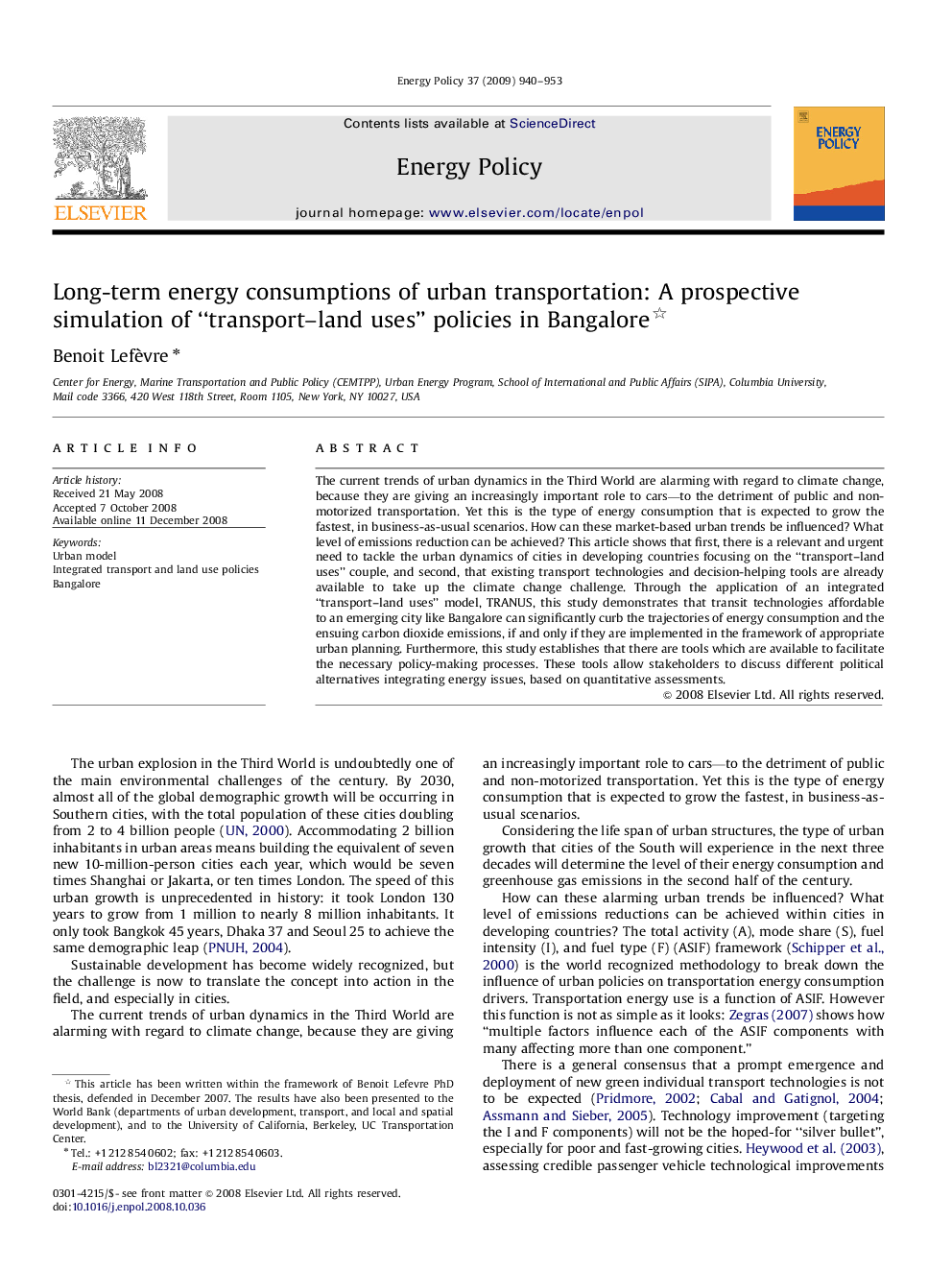| Article ID | Journal | Published Year | Pages | File Type |
|---|---|---|---|---|
| 997019 | Energy Policy | 2009 | 14 Pages |
The current trends of urban dynamics in the Third World are alarming with regard to climate change, because they are giving an increasingly important role to cars—to the detriment of public and non-motorized transportation. Yet this is the type of energy consumption that is expected to grow the fastest, in business-as-usual scenarios. How can these market-based urban trends be influenced? What level of emissions reduction can be achieved? This article shows that first, there is a relevant and urgent need to tackle the urban dynamics of cities in developing countries focusing on the “transport–land uses” couple, and second, that existing transport technologies and decision-helping tools are already available to take up the climate change challenge. Through the application of an integrated “transport–land uses” model, TRANUS, this study demonstrates that transit technologies affordable to an emerging city like Bangalore can significantly curb the trajectories of energy consumption and the ensuing carbon dioxide emissions, if and only if they are implemented in the framework of appropriate urban planning. Furthermore, this study establishes that there are tools which are available to facilitate the necessary policy-making processes. These tools allow stakeholders to discuss different political alternatives integrating energy issues, based on quantitative assessments.
